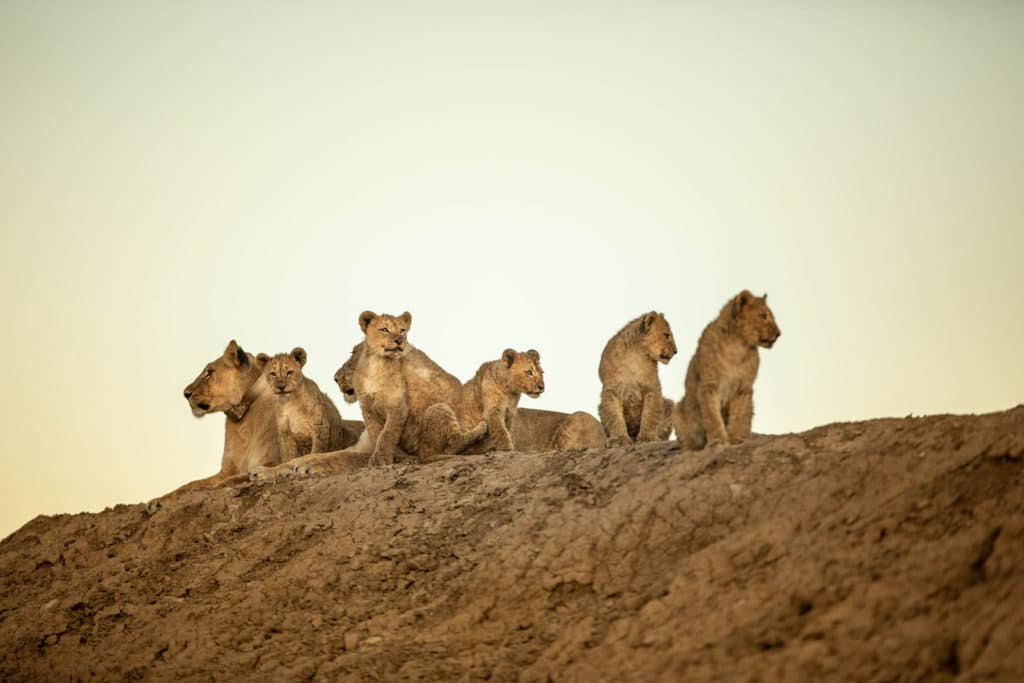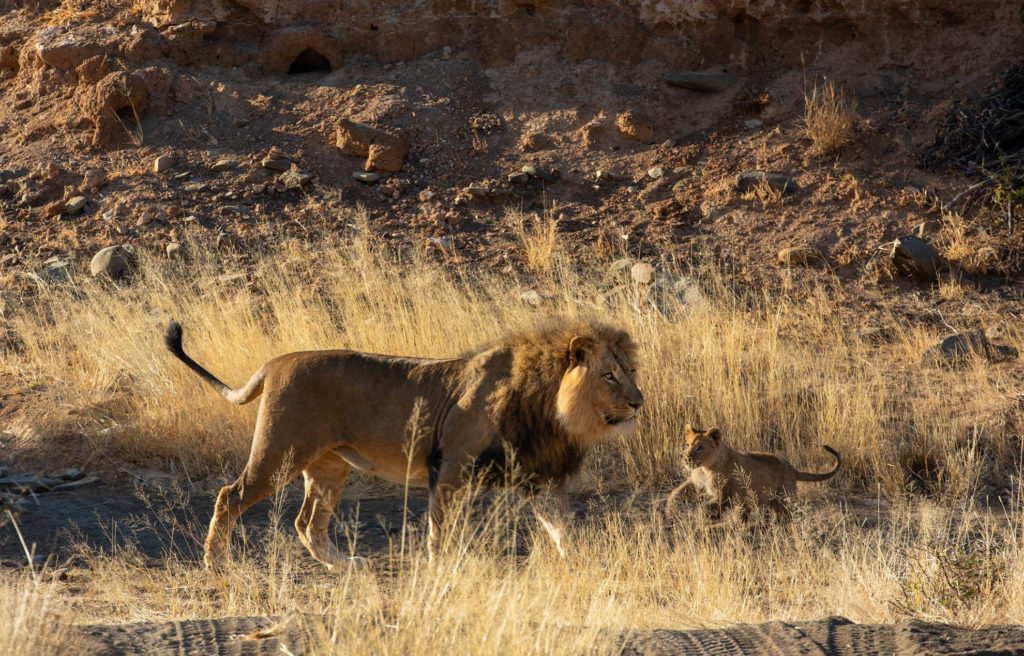There are few words that adequately describe the prickle of goosebumps that travel down your spine and the racing of your heart, at the sound of a lion roaring in the wild. Whether nearby or in the distance, the roar of the lion is the powerful and ancient voice of Africa, inspiring awe and fear. At one metre away, a lion’s roar may measure up to 114 decibels, which is louder than a nightclub or a chainsaw, and even the average rock concert.
But why do lions roar, and what do their vocalizations really mean?
The Panthera Genus Family
The roaring big cat family consists of lions, leopards, panthers and tigers, who are of the Panthera genus group. Anatomically, it is the square shape of their throats, a floating hyoid bone and a specially adapted larynx that give these great cats the ability to produce the deep, guttural vocals that carry for miles across their habitats. The lion, however, possesses the most unique of the roars, with long soulful moans that end in deep, resonating growls.
As conservationists, we dedicate our lives to understanding the mysteries of the wild, such as why lions roar. Our own studies of lions in South Africa indicate that lions make different sounds for varying purposes. Here are the interesting facts about lion roars.
The Big Roar
The lion’s full roar, which can be heard up to 8 kilometres away, is often described as a long, threatening groan ending in a deep, throaty growl. This roar is typically associated with territorial behaviour; it is a demonstration of power and is used to warn competing lion prides, and other animals, of the lion’s size and dominance.
All lions can roar, whether male or female, but large, dominant males are usually louder and more aggressive.
Older lions who have lost their teeth and ability to hunt have been observed using their still-powerful roars to distract prey from younger, hunting lions who are prowling nearby, and to scare the prey closer to the actual predatory pride members.
Barking and Grunting
Lions also communicate with other calls and sounds, through short barks and grunts. These are ‘friendly’ calls, sometimes used to locate pride members who are not within their range of sight. Both lionesses and lions also use roar-like calls to invite mates.
Happy Lion Noises
A relaxed pride of lions will display their contentment with a variety of small, happy noises that indicate that all is well in lion-land and that the pride members are getting along. You’ll hear little moans and huffing and snorts, and a growling-hum that many safari-goers might mistake for purring. Lions, and the other bigs cats in the Panthera genus family actually can’t purr, due to their uniquely adapted larynx.
Lionesses also use a range of these softer sounds to call or communicate with cubs, without drawing attention to them and, in so doing, protecting them from danger. What’s more, during hunting jaunts, lions will communicate using quiet grunts and noises, so as not to frighten off potential prey.
Snarls, Growls and Huff-Puffing
Not all angry lions roar.
When lions are aggravated, they will often display their aggression through low, ominous growls, vicious snarls, and huff-puffing barks. Short, sharp snarls are typically used within the pride, when one lion or lioness is unhappy with the behaviour of another. It serves as a warning that may be followed by a mighty slap with a paw. They will often couple their snarls and woofing-sounds with a frightening mock charge, to really send the message home: I am angry, and I am dangerous.
In fact, body language forms a huge part of lion communication, with many of their sounds being paired with flattened ears, lips curled back to show teeth, and standing onto their toss in an attack-ready stance.
Cub-Sounds
Young lion cubs do not roar, but rather make ragged, little squeals and meow’s that grow in power as the cubs do, too. A young lion generally learns to roar fully around the age of 2 years, which is when he becomes a sub-adult lion.
How Roaring Shows Us That Lions Can Count
In research and studies conducted in Eastern Africa, inter-pride behaviour has been observed, specifically the vocal communication that passes between prides across great distances.
It is customary for lions to roar collectively when they become aware of the scent or sounds of a neighbouring pride. This territorial behaviour alerts the other lions of their presence and also, of their size. What we’ve observed in studying these interactions is that when the listening pride is smaller, they will quietly move away from the dominant pride. However, if they are greater or equal in number, they will engage in a counter-roar.
A vocal competition ensues, a roaring showdown that usually ends in a choral stalemate reminding the opposing lion teams of each other’s abilities. The remarkable conclusion of such observations is that lions are able to distinguish between roars and conduct mental head-counts of their opponents. They use this information to measure the chances of their success in battle.
Cheetahs – Did You Know?
While lions, and other bigs cats, are able to roar, cheetahs do not have this ability. Cheetahs are often mistakenly identified as Big Cats, simply because are large felines. However, the cheetah does not form part of the genus Panthera, but is the last remaining species of the genus Acinonyx, and is closer to what we know as domestic or feral cats.
The cheetah might not be able to roar, but these freckled felines are able to purr, unlike their lion friends.
Hear the Ancient Call
At Magic Hills Private Game Reserve, we have two small lion prides, with growing numbers, that fill the night and early-morning air with their eerie, powerful roars. Hear these ancient calls on your next African safari. Find out more about how Magic Hills Private Game Reserve is dedicated to protecting lions and other vulnerable species, by reading about our iSanti Karoo Foundation initiatives here.





